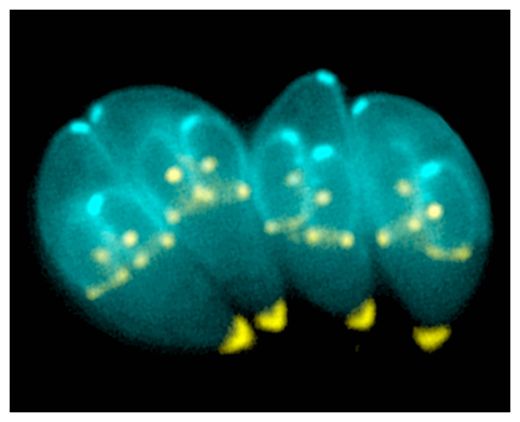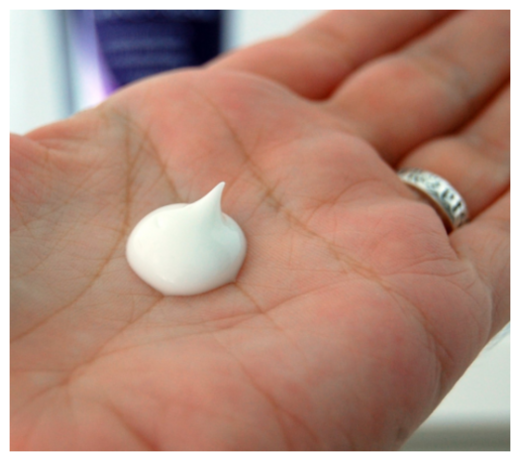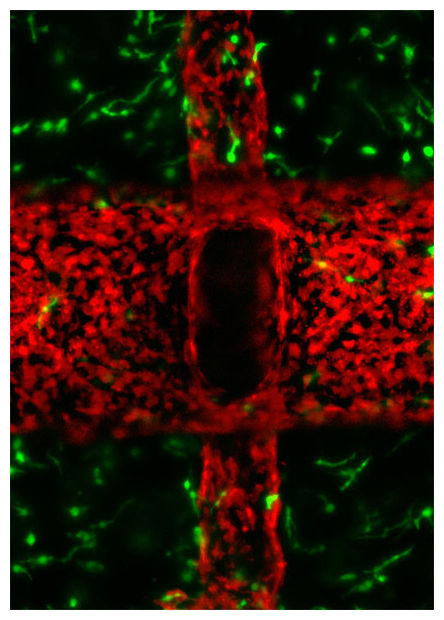
© Ke Hu and John Murray, PLoSThe mind-altering parasite called Toxoplasma gondii has a unique apparatus that is likely used to invade host cells and for its own replication. Shown here, the parasite is building daughter scaffolds within the mother cell.
Women infected with the cat parasite
Toxoplasma gondii are more likely to attempt suicide than non-infected women, new research finds. The reason for this connection, however, remains mysterious.
T. gondii is a protozoa that prefers to infect cats, but can make its home in any warm-blooded animal. Humans can pick up the parasite from contact with cat feces, or by eating undercooked meat or unwashed vegetables. Once ingested,
T. gondii can make a home for itself inside the brain and muscle tissues, protected inside cysts that are resistant to attacks by the host's immune system.
Some studies have linked infection by this parasite with a variety of mental health and brain problems, including schizophrenia, neurosis and
brain cancer. But scientists aren't clear on whether the parasite contributes to these problems or is a mere side effect. Someone with schizophrenia, for example, might struggle to keep up good hygiene, meaning the mental disorder could increase the risk for infection.
The new study linking suicide and
T. gondii has the same limitation. Researchers can't say for sure whether the parasite somehow drives people to suicide. But in women with infections, they found, the risk of an attempt is 1.5 times greater than in women without.
"We can't say with certainty that
T. gondii caused the women to try to kill themselves, but we did find a predictive association between the infection and suicide attempts later in life that warrants additional studies," lead researcher Teodor Postolache, a psychiatrist at the University of Maryland School of Medicine, said in a statement. "We plan to continue our research into this possible connection."


